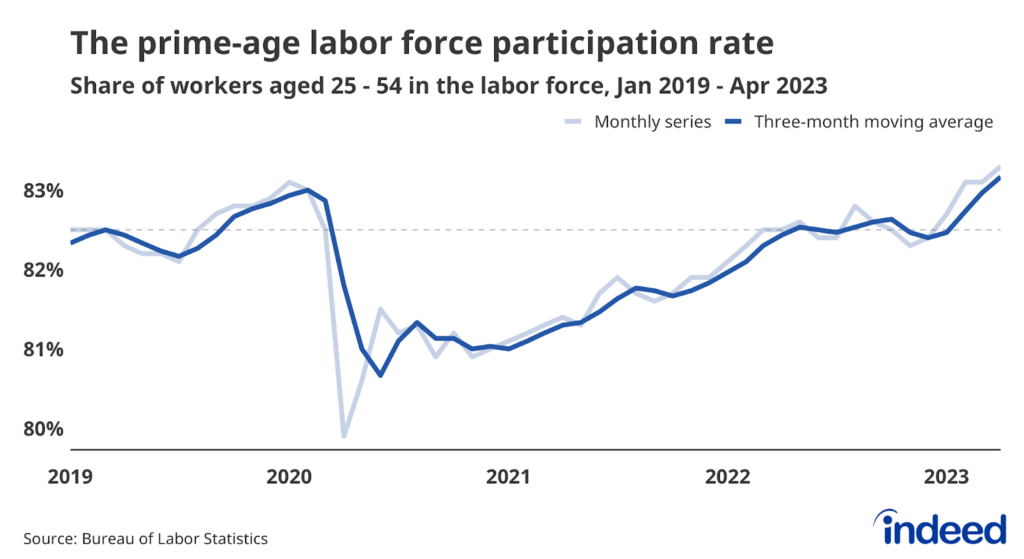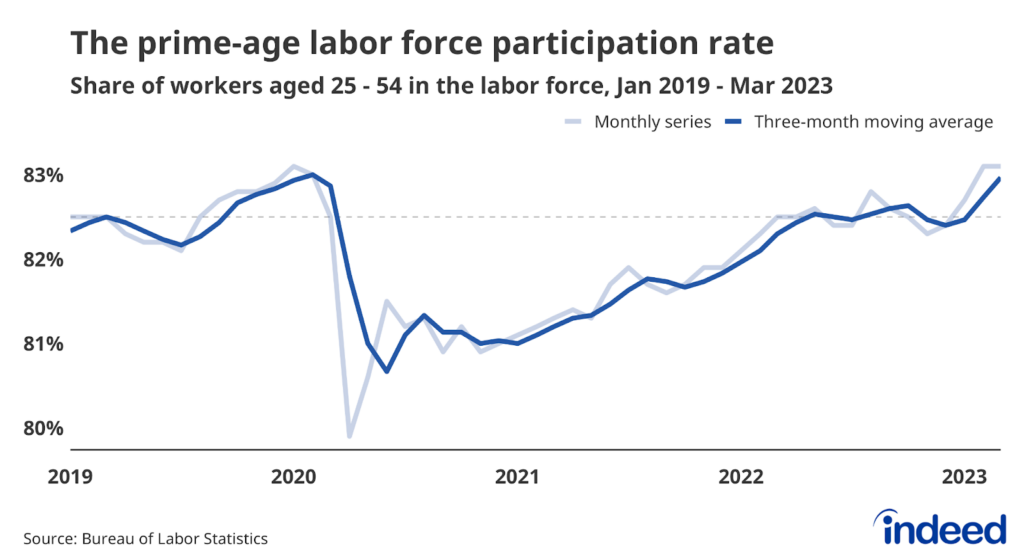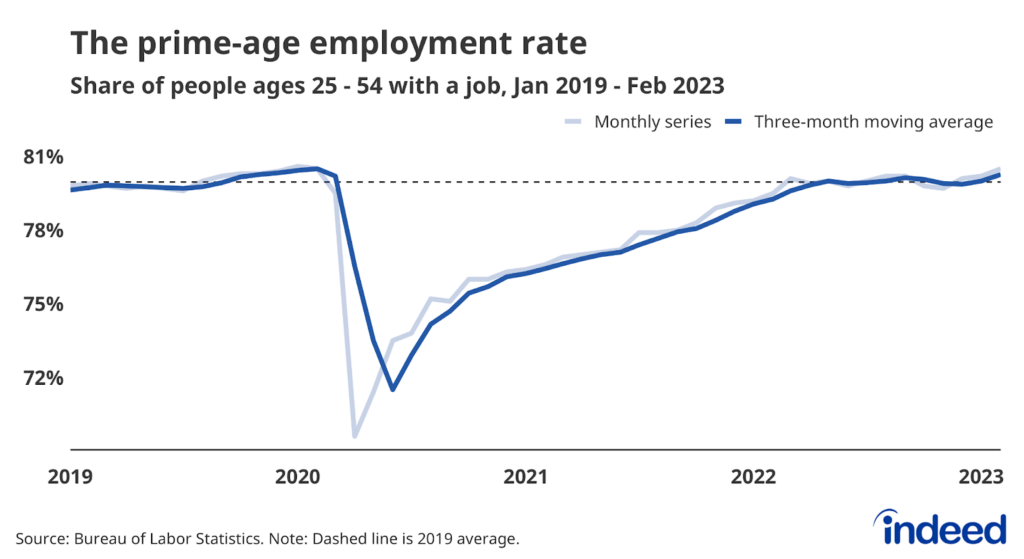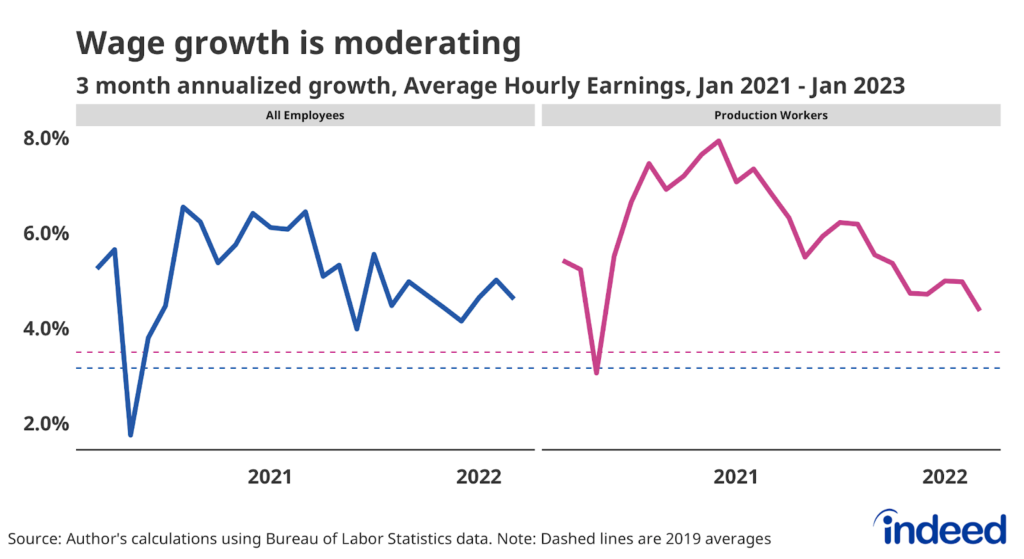Key points:
- Employers added 253,000 jobs and unemployment declined to 3.4% in April, according to the latest report from the US Bureau of Labor Statistics.
- Not only was unemployment low, but more workers are entering the labor force. The participation rate for workers ages 25 to 54 is the highest since March 2008.
- Payroll growth is declining, but the current pace of job gains is still more than strong enough to keep the unemployment rate low.
There’s good news for every audience in this jobs report. Workers will be happy that unemployment remains low, and those out of work are still able to find jobs quickly. Employers will be pleased that labor force participation continues to grow, particularly for prime-age workers. And policymakers at the Federal Reserve will be comforted by the gradual cooldown in the pace of hiring. The US labor market is on a smooth trajectory, but turmoil in the financial market could cause turbulence.
This labor market continues to work for workers. Unemployment is very low, but the continued progress in enticing people into the workforce is perhaps more encouraging. The labor force participation rate for workers ages 25 to 54 hit a level previously seen in March 2008, and the last time the employment rate for these workers was this high was May 2001. The number of workers who were unemployed because they had recently lost a job dropped in April, reversing a concerning rise seen in recent months.
Payroll job gains continued to moderate, with the three-month moving average ticking down to 222,000 in April, less than half of what it was a year ago. The slowing job gains might concern some people, but this rate of growth is well above the level needed to keep the unemployment rate steady. Furthermore, the slowdown in hiring will encourage monetary policymakers that the labor market continues to shift into a better balance.
No jobs report is perfect. The continued decline in temporary-help-services employment may start tripping some traditional recession alarm bells, but given the rapid pace of hiring in recent years, it may simply be another sign of moderation. Workers, employers, and policymakers should be encouraged about the current state of affairs, but it’s unclear how much longer it can endure.



